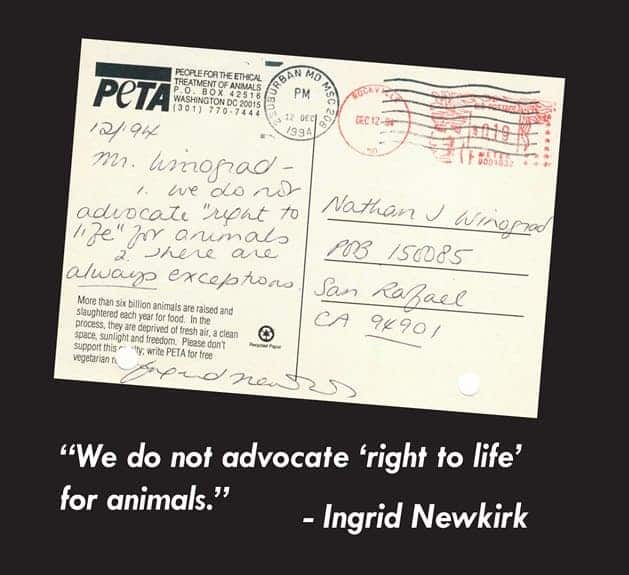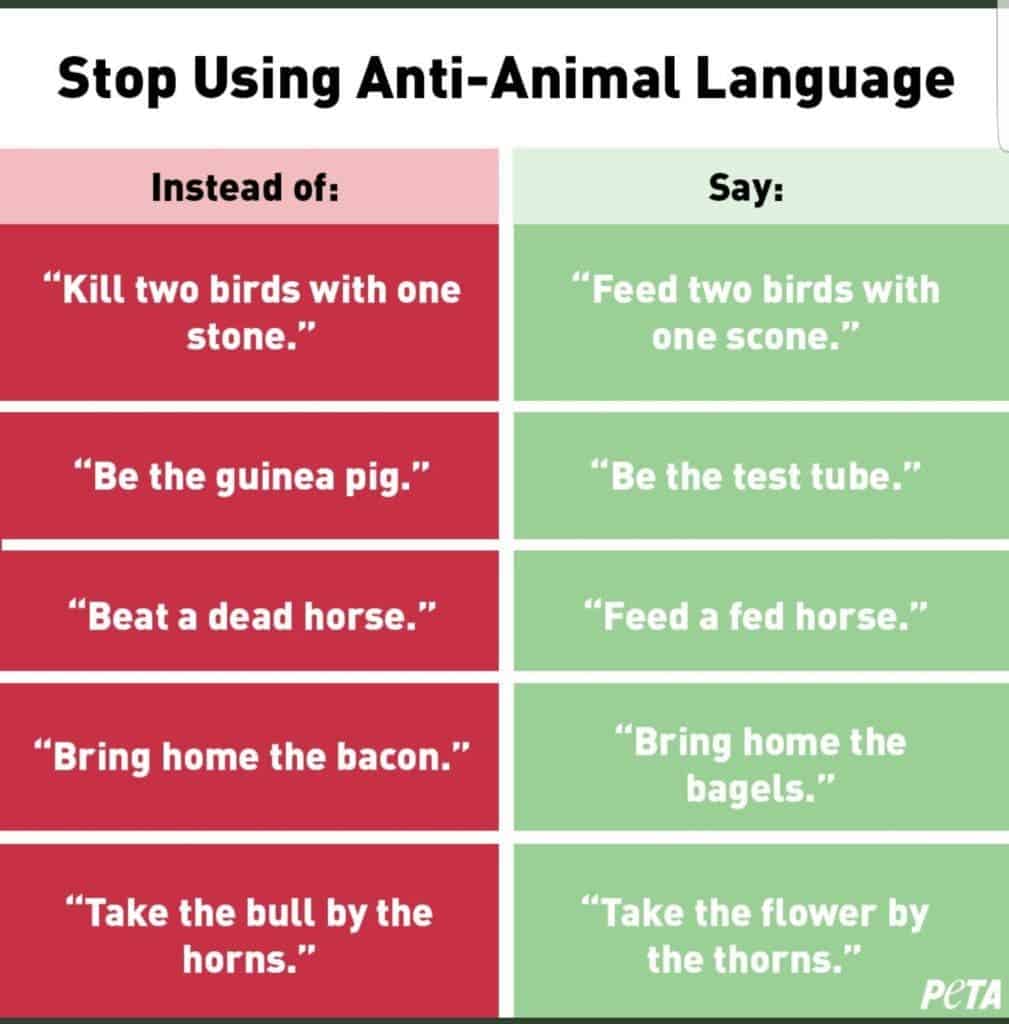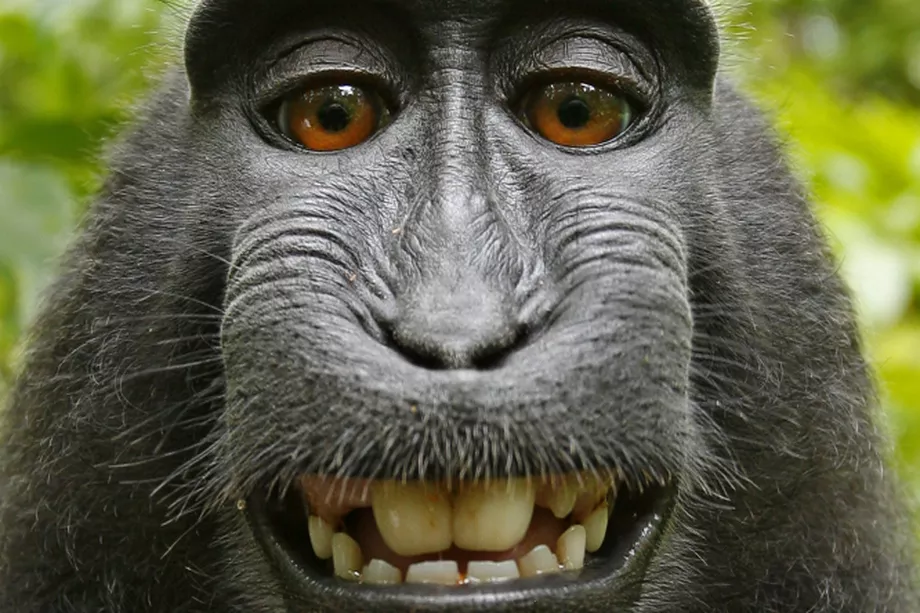PETA (People for the Ethical Treatment of Animals) is an animal rights organization — one of the largest and most influential in the world. They have a history of using impactful and very visible campaigns carried out on behalf of animals. Yet PETA casts a very dark shadow, riddled with stories about needless euthanization, manipulation, and even eco-terrorism. Even among other animal activists, PETA’s ways are disliked.
Let’s see why there is so much controversy surrounding them.
PETA stealing and euthanizing pets

PETA’s official stance is that animals shouldn’t be pets — at all.
“This selfish desire to possess animals and receive love from them causes immeasurable suffering, which results from manipulating their breeding, selling or giving them away casually, and depriving them of the opportunity to engage in their natural behavior,” their website reads.
While there is a larger philosophical discussion to be made here, PETA employees have taken their case to an inhumane level: on at least two instances, PETA workers have been arrested for stealing other people’s pets. Although PETA disowned this practice and the charges were dropped because “intent of the workers in those cases was not sufficiently clear”, the organization never really explained what happened when two employees snatched a dog from someone’s porched and euthanized after just two hours. After months of silence, PETA finally claimed that the animal had been confused for another one, but no satisfying explanation was offered. PETA received a slap-on-the-wrist fine of $500, but that wasn’t the end of things. The owners of Maya (the dog presented in the image above, who was euthanized by PETA) sued the group.
They showed that over several weeks, PETA representatives had been visiting the trailer park where the owners lived, befriending them and talking to them about neutering and spaying animals. But one day, they tried to lure Maya out of her home. When that failed, they simply stole and killed her within hours. Although Virginia law dictates that private shelters like PETA must notify the municipal animal control and must keep animals safe for at least five days, PETA did neither.
During the trial with Maya’s family, PETA issued (and lost) a motion stating that Maya’s life was worthless. PETA administrators were forced to turn over records and testify under oath about their inner workings — particularly, their campaign of animal extermination. PETA settled the case by paying Maya’s family $49,000.
In 2007, a PETA worker was also arrested for kidnapping a sheriff’s dog. The charges were, again, later dismissed because the PETA claimed the worker was rescuing the dog — but given PETA’s killing stats, that seems at least questionable (more in the next chapter).
Another notable case took place in 2005 in Ahoskie, North Carolina. Local police were shocked to discover the bodies of 80 dogs and cats, including puppies and kittens, from a rubbish container. Ingrid Newkirk, PETA’s president, seemed more affected by the media impact than the practices of her organization. PETA wholeheartedly supported its workers, claiming that their only mistake was the disposal of the carcasses.
“It’s hideous,” admitted Ingrid Newkirk, Peta’s president, after the arrests. “This is so shocking. It’s bound to hurt our work.”
Formally, PETA does not encourage members to kidnap pets and has spoken against these acts, but it has fully supported its employees through these events. Although there is no evidence of systematic stealing and euthanizing animals, these acts are largely in accord with PETA’s general stance, which often leads to unnecessary euthanasia.
Serial “mercy” killings
PETA openly opposes the no-kill movement and will kill perfectly adoptable animals (even puppies and kittens). In fact, PETA does not believe that animals have a right to live — Newkirk said as much, in a postcard to Nathan Winograd, a Stanford Law graduate who leads the No Kill movement: “We do not advocate ‘right to life’ for animals.”

The problem stems from an absolutely uncompromising stance on euthanasia — something which PETA sees as “compassionate.” Their stats paint a chilling story: according to a report from the Virginia Department of Agriculture in 2010, PETA kills 90% of the animals their shelters receive within 24 hours. According to a Virginia state inspector, the PETA facility where animals are impounded was designed to house animals for no more than 24 hours.
The 2011 stats are also damning: out of 760 impounded dogs, only 19 were adopted. Out of 1211 cats, only five were adopted. PETA also took in 58 other companion animals, killing 54 of them. As of 2015, reports show that they kill “only” 75% of the animals they receive, 90% of which are killed within 24 hours.
PETA still has an adoption rate of less than 1%. By contrast, the Lynchburg Humane Society (LHS), also located in Virginia, took in about the same number of animals as PETA in 2014, but saved 94% of them and found a home for 90%.
Overall, this strongly indicates that adoption isn’t important to PETA, and that they are much more comfortable euthanizing animals than trying to find homes for them — they more often eliminate pets rather than attempt to actually help them. PETA’s opposition to no-kill shelter and its continued efforts to euthanize animals have made them a target of widespread criticism from other animal rights groups.
Newkirk has never strayed from her belief that while animal suffering is bad, killing animals to rid them of suffering is good. She essentially started her animal rights career by killing animals — in a completely unapologetic way. Describing her experiences of ridding animals of the suffering of shelters, she said:
“I would go to work early, before anyone got there, and I would just kill the animals myself,” she once told the New Yorker about her first job at an animal shelter. “I must have killed a thousand of them, sometimes dozens every day.” She considered that the animals were held in inhumane conditions.

PETA says they will “take in” animals which nobody wants, which is why their kill rate is so high. However, this only partly justifies their high kill rate and does nothing to explain why animals are killed so fast — often, 24 hours isn’t even enough time for an owner to locate their pet and reclaim it. Also, they claim to only euthanize unadoptable animals, but this has been disproven time and time again.
PETA employees have also revealed that they were told to get their hands on as many animals as they could — knowing that the vast majority of them would be killed.
“The objective of the program,” a former PETA employee said, “was to get as many animals as possible and the vast majority of those animals were killed. I was told to pretty much say anything I needed to say to gain custody of an animal… I was told to lie by my direct supervisors directly and then by Ingrid [Newkirk]…” she continued.
Another PETA employee described similar practices:
“They would take the animals into that room and they would be euthanized. A litter of kittens, sometimes a mother with kittens, they were put in that room and once you went in that room, you never came out.”
The same employee described instances of animals being brought in for spaying and neutering — only to be euthanized.
PETA has repeatedly denied these claims.
Advocating the killing of certain breeds
“Those who argue against the euthanasia policy for pit bull dog are naive,” Newkirk wrote in an article a few years ago.
Newkirk and PETA have been among the most outspoken supporters of Breed Specific Legislation (BSL) — laws which criminalize living with certain dogs, especially pitbull-type dogs. They have tried to stop the efforts of animal rights groups who work to save and foster such dogs.
“PETA also recommends a ban on the adoption/release of dangerous dogs and fighting breeds (commonly known as “pit bulls”),” the group wrote in a letter to the mayor of Williamson County.
A former employee described an instance in which a perfectly healthy and friendly pitbull dog was killed — only because it was of its breed.
“This pit bull was wagging its tail, jumping (an obvious friendly dog; not feral) while receiving praise, treats and getting pet by the … employees. It was the end of my shift, so I was cleaning and restocking, which required me to go into their shed for supplies. I saw the [two] CAP employees take the pitbull into the shed’s euthanasia room, which is inside this shed. It is a small room where they have a table and a huge walk-in freezer with [four] large trash cans. The trash cans contained deceased animals and were usually full. As I continued to do my job, I heard the employees talking to the dog and trying to calm it down as it whined. Later … they opened the door and I saw the pit bull deceased on the table.”
The idea that pit bulls are inherently aggressive and dangerous has been disproven by science several times. The PETA stance is not only non-scientific, but it is inhumane, as exemplified by the official ASPCA stance on pit bulls:
“All dogs, including pit bulls, are individuals. Treating them as such, providing them with the care, training and supervision they require, and judging them by their actions and not by their DNA or their physical appearance is the best way to ensure that dogs and people can continue to share safe and happy lives together.”
Funding arson and domestic terrorism
Throughout its history, PETA has offered tens of thousands of dollars to individuals or groups performing violent crimes — including a $1,500 donation to ELF, a group which has been classified as “domestic terrorism” by the FBI. PETA also paid $70,200 for the defense of Rod Coronado, serial arsonist convicted of burning down a Michigan State University research laboratory. In addition to supporting him financially, PETA has openly supported this type of action, with PETA vegetarian campaign coordinator Bruce Friedrich reportedly telling an animal rights convention that “blowing stuff up and smashing windows” is “a great way to bring about animal liberation,” and adding, “Hallelujah to the people who are willing to do it.”
Needless to say, the vast majority of animal rights activists have the opposite stance.
David Jentsch, a neuroscientist at the State University of New York at Binghamton and founder of the pro-animal research group Pro-Test for Science, has had his car firebombed outside of his house and has received packages of bloody razor blades, as well as a letter imagining his murder in graphic detail. The animal rights wing of ELF (ALF) has claimed responsibility for both acts, which PETA and Newkirk especially have supported over the years.
“We did it, we did it. We gave $1,500 to the ELF for a specific program,” PETA’s Lisa Lange admitted on the Fox News Channel. PETA has offered multiple conflicting explanations of what the “specific program” was — but ELF has no legal programs that we could find.
PETA also has given $2,000 to David Wilson, then a national ALF “spokesperson,” paid $27,000 for the legal defense of Roger Troen, who was arrested for taking part in an October 1986 burglary and arson at the University of Oregon, and gave $7,500 to Fran Stephanie Trutt, who tried to murder the president of a medical laboratory. Their official position strongly suggests that they still support ALF.
More recently, PETA members have also directly threatened and harassed researchers. Yale ornithologist Dr. Christine Lattin said she received threats from PETA after published scientific papers on endangered birds. Lattin — who studies the effects of climate change and environmental disasters on animals — said PETA and its supporters sent her death threats and claimed she was “torturing and killing” birds. PETA members also found out where she lives and protested her house.
Professor Kevin Folta (who has suffered much criticism of his own) said that Lattin was singled out because as a young postdoc, she is particularly vulnerable and easy to attack.
Furthermore, studies have shown that single-issue campaigns, like the vast majority of those produced by PETA, are largely ineffective. PETA tends to focus on a single tree while ignoring the whole forest. For instance, they condemn recreational fishers, even catch-and-release fishermen, while ignoring the fact that without these fishermen, there might not be any fish for PETA to worry about — recreational fishermen often turn out to be excellent conservationists.
While there are several peer-reviewed studies funded by PETA in the literature, the overall scientific impact is hard to assess — although PETA’s efforts appear to be directed at the industry and education side more than the purely scientific one. PETA has also funded several medical facilities to help them eliminate unnecessary animal surgery practice. These are the actions one would expect to be at the core of the organization — more so than publicity stunts.
Of course, PETA is entitled to use its money in any way it sees fit, but often times people are not aware of how their money is spent, and there is reason to doubt that much of this money is legitimately helping animals. Their yearly report is riddled with media stats and barely mentions programs focused on animals.
PETA also likes to use its resources to toss its authority around. Newkirk was once quoted as saying, “Businesses are terrified. They have no idea what I’m going to do next.”
Extreme and misleading campaigns

Many people find that PETA’s extreme stances on so many different issues are highly counterproductive and can be seriously harmful to animal activism. For instance, they condemned a vegetable burger company because their product was tested on 180 rats. Of course, it’s fair to be upset about animal studies — but given the overall impact and the scale of things, this just seems like animal activism shooting itself in the foot.
PETA has also not hesitated to use horrifying events such as murder, cannibalism, and even the Holocaust in their ads — which has angered many people, especially members of the Jewish community. The European Courts of Human Rights has banned PETA from using Holocaust imagery in their advertisements.

They have also used misleading campaigns more than once, leaving most animal rights activists (even vegans) feeling “disgust and anger” at the organization. A good example is the anti-shear campaign which PETA recently pushed, which used a bloody but fake lamb mannequin to send a bloody and also fake message.

These images are meant to shock users, but as everyone who ever worked with sheep can attest, actually hurting sheep by shearing has not been done for hundreds of years. The idea that wool clothing causes lambs and sheep to die is far from the truth. Domestic sheep need to be sheared or it can lead to severe health problems such as infections and exhaustion. There are of course examples of mishandling sheep and there are legitimate reasons to not wear wool, but PETA’s campaign is nothing but shocking and misleading. This is a common strategy used by the organization: use shocking imagery with little concern for the truth.

This is hardly an isolated example — PETA prioritizes shock value, regardless of whether there is any truth to their campaigns. PETA often proudly uses children in their advertisements, and has admitted to specifically targeting children and bypassing parental authority.
Some of their communication campaigns are also often regarded as downright silly — such as replacing age-old sayings with more “harmless” messages.
They were also upset at President Obama when he swatted a fly, calling it an “execution.”
PETA have made themselves the object of ridicule several times, like when they asked ice cream producer Ben and Jerry to use breastmilk in their recipes. PETA was thrilled with the attention they gathered, but for most animal rights activists, this did nothing to help a worthy cause — it was only PETA milking every bit of attention they can get.
You might also recognize the photo below — a selfie taken by a macaque called Naruto using the camera of photographer David Slater. Slater claimed copyright of the photo, but several organizations felt that since the image was taken by the macaque, it couldn’t be protected by copyright. PETA jumped in and sued Slater on behalf of the macaque, which led to a long back-and-forth legal battle which left Slater bankrupt — but for PETA, it was nothing really major.
Photo by Naruto, via David Slater.
In one of their latest unpopular stances, they claimed that criticized Google for having their logo being a drawing of beloved icon Steve Irwin, the Crocodile Hunter. PETA suggested that Irwin had been harassing the stingray and mocked Steve Irwin’s massive conservation efforts to save endangered species — completely ignoring the huge role he played in raising awareness about exotic and endangered animals. Ultimately, the court of appeals slammed PETA for using Naruto as an “unwitting pawn” to promote its own agenda. “PETA’s real motivation in this case was to advance its own interests, not Naruto’s,” the court concluded.
“How do we prevent people (or organizations, like PETA) from using animals to advance their human agendas?” asked the court majority in one footnote.
Promoting pseudoscience
PETA sometimes claims to have scientific evidence to back up some of its campaigns. But as ScienceBasedMedicine.org puts it, they are “using science as a drunk uses a lamppost — for support rather than illumination. In that way they are typical of ideological groups. They have an agenda, they are very open about their beliefs, and they marshal whatever arguments they can in order to promote their point of view.”
PETA has argued that “scientific studies have shown that many autistic kids improve dramatically when put on a diet free of dairy foods.” However, the studies they cite have a very small sample size at best — and are unethical and misleading at worst. For instance, one study used a sample size of 20, which is hardly convincing, and was subsequently debunked by two independent reviews. Simply put, it’s shoddy science.
PETA also suggests in vitro testing as well as computational models are sufficient in determining if a treatment is safe for humans. Unfortunately, this simply isn’t true. While recent advancements might significantly reduce the need for animal testing, PETA’s stance does not reflect the scientific reality.
Also, while it should be said that some researchers have reported that PETA fueled animal lab improvements, others felt like the organization undermines scientists. Several researchers working with animals have been publicly targeted and undermined by efforts from PETA members.
Questionable usage of funds and influence
For a group with funding of over $30 million, PETA uses surprisingly little of that to directly help animals. It has been claimed that less than 1% goes in that direction, but in truth, it’s impossible to trace exactly where PETA’s money goes.
In recent years, their revenue tops $50,000,000 / year — the vast majority of which comes from donations. While they offer general information and a few examples regarding where the money went, the expenses are not exactly transparent. Out of this sum, $19,887,868 went to “Research, Investigations, and Rescue” — which sounds great, until you realize that it’s just about 25% of the whole budget, and it’s still unclear where the money is directed.
Very little of that money can be traced to projects that directly help animals. For instance, as one of its main achievements, PETA says that they built “250 sturdy dog homes” — which sounds like something a single handy person could do in a few months.
It should be noted that PETA says that over its lifetime, it offered “more than $5.8 million (including the value of in-kind donations) toward the development of non-animal testing methods, simulators to replace animals in science education and medical training, and instruction for scientists in their use.” However, this is still a fraction of their yearly operations expenses. In 2015, PETA’s tax release showed legal fees in excess of $1 million, while the “other” expenses are listed at over $14 million a year. Meanwhile, the grants they offer to directly save animals are listed at less than 2% of PETA’s annual income. PETA claims to have not spent a single dollar traveling to scientific conferences or conventions.
The bulk majority of their money is spent on salaries, “International Grassroots Campaigns,” and “Public Outreach and Education”.
Hypocrisy and Misinformation
For all its extreme stances, PETA has a surprisingly rich history of looking the other way when its members or partners act hypocritically. For instance, Pamela Anderson is one of PETA’s long-time celebrity partners, and when Anderson auctioned off her Dodge Viper and to support an anti-slaughter campaign, PETA was thrilled. But the car had a luxury “leather interior” — which the organization simply brushed off.
Jenna Jameson, the “Queen of Porn”, was seen wearing a leather jacket just days after launching an anti-leather campaign for PETA, and there was no comment from the organization. Dita von Teese, another one of PETA’s celebrity supporters, often poses wearing furs and has openly spoken about her love of eating foie gras, which PETA themselves say causes great animal suffering.
Model Kimora Lee Simmons, spokesperson for PETA, has no problems wearing fur.
However, while they advocate a complete abandonment of everything that uses animal products or involved animal testing, PETA members don’t seem to “walk the walk.” Mary Beth Sweetland, a former PETA executive who vigorously campaigned against medical research relies on insulin injections which were tested on animals:
“[My medicine] still contains some animal products — and I have no qualms about it…. I don’t see myself as a hypocrite. I need my life to fight for the rights of animals.”
Of course, we’re not saying that it is wrong to use insulin — quite the opposite — but this is in direct opposition to what PETA stands for, as illustrated by an episode of Penn & Teller: Bulls, which Penn Jillette, the show’s co-host, concludes thusly:
“I said to the researchers, ‘Don’t tell me the second-in-command of PETA [Senior Vice President MaryBeth Sweetland] is a diabetic who uses animal products [in the insulin she takes] to keep her alive, but thinks other diabetics should die, because since she’s working for animals, it’s for the greater good.”
There is also the larger issue of PETA’s hypocrisy as a whole — remember the Maya trial, when PETA tried to argue that animals lives are worthless, while at the same time claiming to fight for animal rights?
PETA has also openly lied, trying to justify the large number of animals they euthanize. They claim that all of the animals they kill are irremediably suffering, stating that adoptable animals don’t come to PETA. Of course, the killing of puppies and kittens strongly betrays that, as does the more extreme case of Maya. Several employees have spoken about PETA’s killing of perfectly healthy and adoptable animals.
The methods of PETA are often unethical, resorting to trolls and active sabotage — even if it means targeting other animal rights groups. Smear campaigns seem to often be the norm.
Speaking to The Guardian, Newkirk commented that she hopes the foot-and-mouth disease, which forced farmers to kill millions of animals, would spread to the US.
‘I hope it comes to the US,’ she said. ‘It wouldn’t be any more hideous for the animals – they are all bound for a ghastly death anyway… It will bring economic harm only for those who profit from giving people heart attacks and giving animals a concentration camp-like existence.’
For an organization which claims to be all about reducing animal suffering, wishing a devastating disease on an animal population raises a lot of question marks.
PETA’s own president characterized the organization as “complete press sluts”, and PETA seems to take an extreme stance on as many things as it possibly can, often times strictly to raise attention. For the more moderate side of the organization, this is simply an exercise of raising awareness. But for the more extreme members, things are taken quite literally.
The bottom line
PETA started out by helping launch the first police investigation into animal cruelty in research facilities. It was a much-needed conversation that society needed to have. The Silver Spring Monkeys, as the case came to be called, made headlines. No doubt, PETA has done significant good in their activity. Their investigations were, at times, true milestones for animal rights awareness. Over the time this article was written, we also uncovered several smear campaigns directed against PETA itself and several baseless allegations have been made against the organization. PETA does not routinely kidnap pets nor is it a terrorist organization, and it has been attacked by astroturf organizations from the junk food industry.
However, this does not justify unethical, inhumane, and often baseless behavior. PETA is a very influential organization — but they are also one of the most extreme ones. They thrive from notoriety and shock and show surprisingly few projects directly helping animals.
For all its talk, PETA seems more enamored with seeing itself on the news than actually helping animals.
There’s nothing inherently wrong with using shock tactics. PETA tries to elicit emotions and brute force a societal change — but while they are effective at raising awareness, these methods can also be very counter-productive. After all, notoriety can only get you so far; when you shed your morals, results cannot truly be on the positive side. For better or for worse, PETA does not represent the mainstream approach and practice to protecting animal rights, nor does it have a science-based position.
PETA has provided justification for its huge killing numbers, but an organization that gets over $50 million in donations really should do better than that. Also, blatant hypocrisy (both localized and generalized) abound in the organization, turning many animal activists and organizations away — even those which share some of PETA’s objectives. Often times, PETA seems more like a religious cult than an animal rights organization.
Also, PETA has fallen to the dark side more than a couple of times. They have shown that they are willing to throw anything — and anyone — under the bus to achieve their goals. Other animal rights organizations have written that with its extreme positions, PETA is sabotaging its own mission — and it’s hard to feel otherwise. Despite its undeniable contribution to animal rights awareness, PETA has a surprising number of skeletons in its closet, and it seems proud of those skeletons.
From killing healthy pets to save them of suffering to supporting eco-terrorism and misleading, unscientific campaigns, PETA is shrouded in a dark cloud of systematic controversy.







